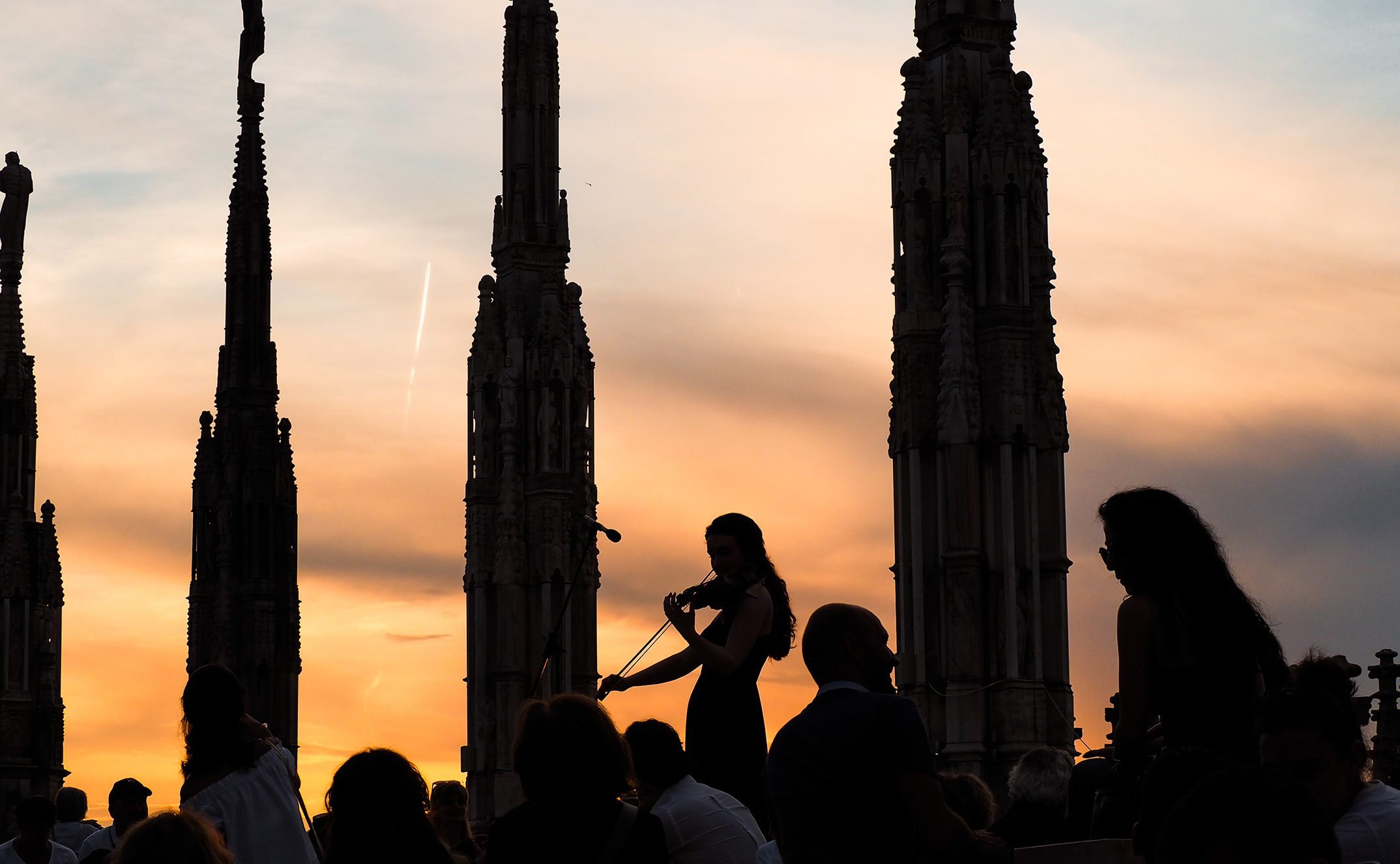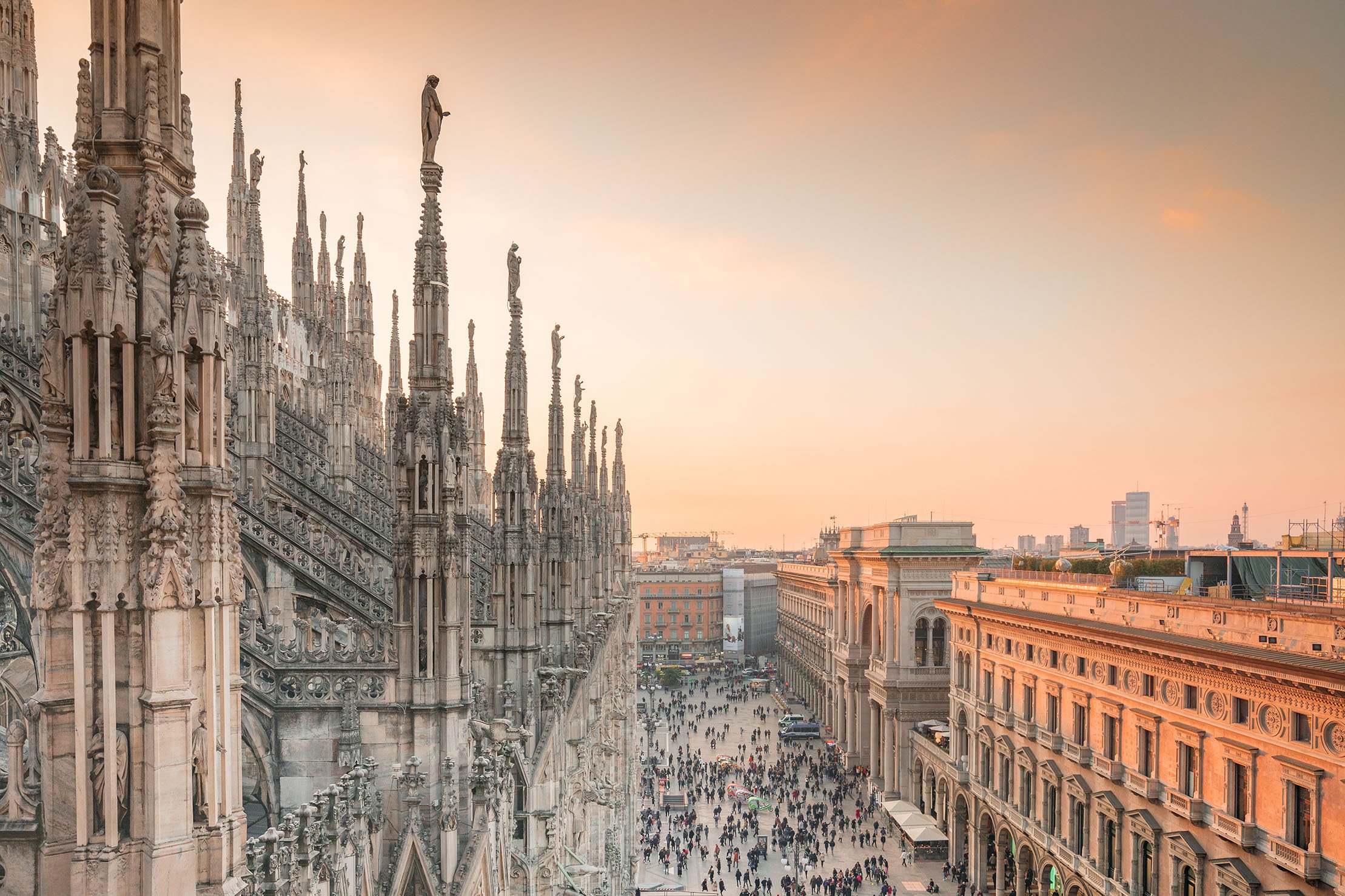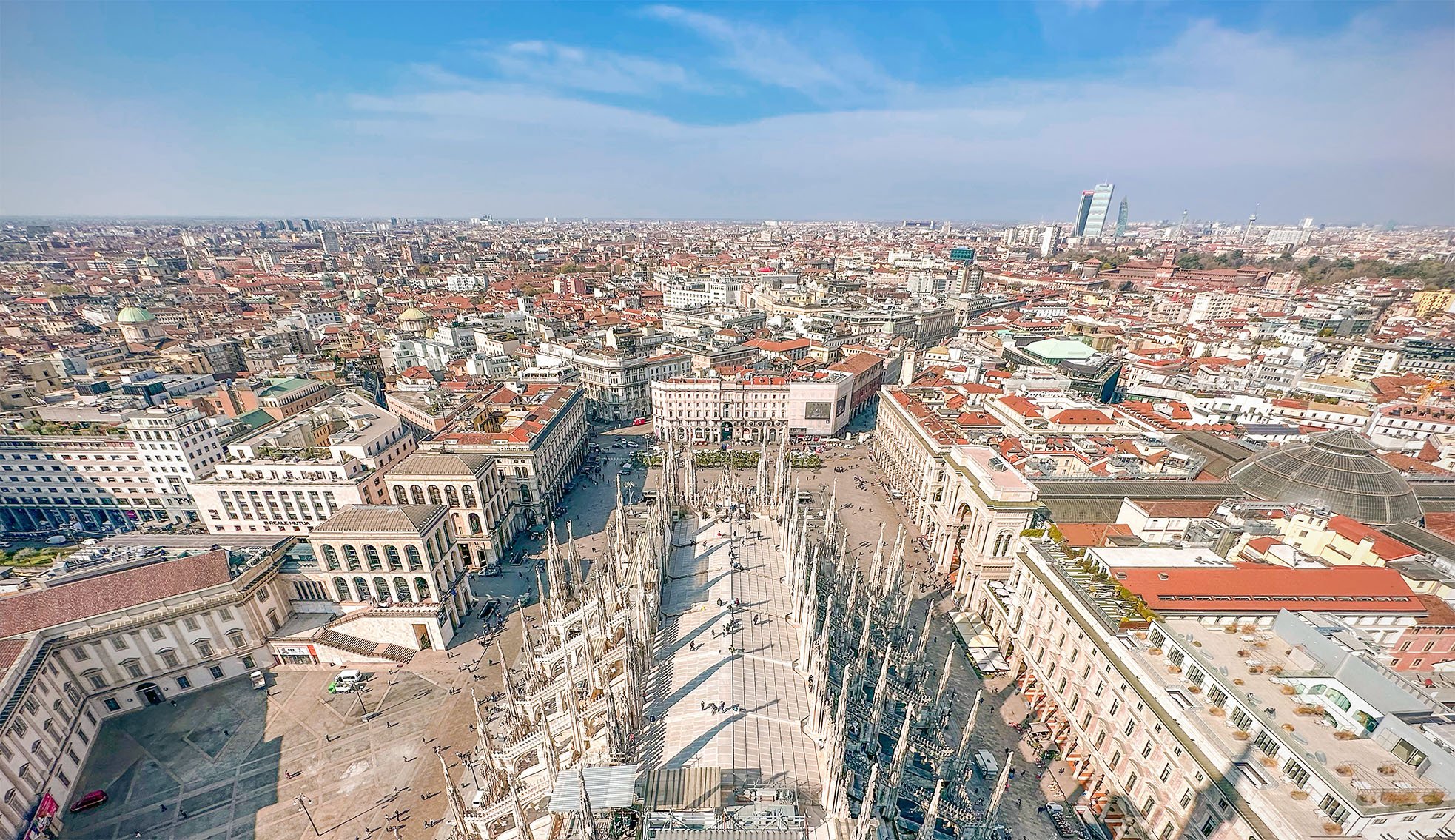Archaeological Area
Below the Duomo’s parvis the remains of some buildings of worship dating back to the period between the Roman Empire and the Middle Ages can be found, demolished to make way for the construction of the new Cathedral. These archaeological finds recount “the square” before the Duomo, where two basilicas stood: Santa Maria Maggiore (dating back to the 9th century) also known as the Jemalis (winter) basilica and Santa Tecla (4th century), the basilica in use during the summer months. Near these two buildings, the Baptistery of San Giovanni alle Fonti also stood, built in 378. It was inside the latter that Saint Ambrose baptised Augustine in 387, when Milan was the capital of the Western Roman Empire.
Eight columns enlivened the octagonal space, in the centre of which was placed the large baptismal pool, also octagonal and still visible today. In the 6th century, the Baptistery was enriched with the addition of mosaics, marble panels, and a refined geometric-patterned flooring in black and white tiles, many portions of which have survived to this day. The Baptistery of San Giovanni alle Fonti was demolished and buried around a thousand years after its construction (from around 1386) to make room for the nascent Cathedral.
Next to the Baptistery was the Summer Basilica of Santa Tecla, of which portions of the apse dating back to between the end of the 4th and the 12th century are still visible. In the archaeological area below the Duomo, the remains of some tombs of prominent people and traces of an ancient three-apse hall have also emerged, most likely intended for funerary purposes.


